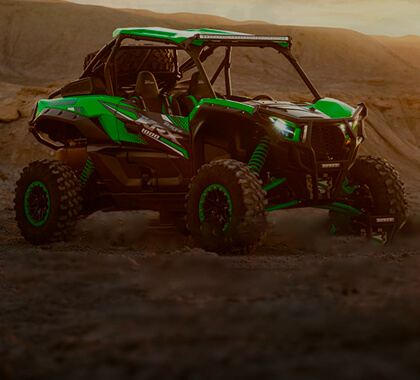What to Look Out for When Buying Kawasaki KRX 1000 Power Steering Kits?
KRX 1000 Steering System Types
In the world of Kawasaki KRX 1000 steering systems, one must first decide between the trusted hydraulic steering systems and the newer electric power steering systems. There's been extensive chatter about electric vs. hydraulic systems. Hydraulic ones, though proven to be sturdy, necessitate consistent fluid maintenance, but people are used to these and know what to expect. Contrarily, Kawasaki KRX 1000's electric systems stand out for their simplicity and precision, and the fact that they can often vary the assistance. They are often associated with refined steering responsiveness, particularly with those featuring variable-assist mechanisms. However, it's worth noting that electric systems for the KRX 1000 come with a higher price tag.
Material Integrity and Durability
When it comes to Kawasaki KRX 1000 power steering kits, one also needs to be aware that these have to be durable enough to endure all the stresses associated with extreme off-roading. It's imperative to choose kits made of industry-leading materials, featuring elements like robust mounting brackets, anti-corrosive treatments, and flexible yet durable tubing. Such enhancements ensure your kit is primed for challenging terrains and will stand the test of time even after intensive KRX 1000 usage.
Steering Assistance and Feel
A power steering kit should do more than just function—it should amplify your KRX 1000 driving adventure which means potentially giving you a variable level of steering assistance. Ensure you opt for kits that pledge improved steering fluidity and a harmonized ride. Some drivers lean towards a feather-light touch, while others crave a more direct, tactile connection to the terrain. For instance, if adventurous trails and prolonged off-road sessions are your preference, consider kits that lean towards more substantial assistance. Conversely, those who seek thrill in speed and agility might appreciate a weightier system.
Maintenance
Certain Kawasaki KRX 1000 power steering kits cater to DIY enthusiasts, while others are best left to professionals due to their complexity and because they aren’t exactly easy to maintain. Evaluate your comfort level with mechanical tasks. Avoid venturing into installations that might be beyond your expertise. Post-setup, it's beneficial to establish a routine check-up. Monitor the fluid conditions, be on the lookout for potential leaks, and always use the advised fluid variant. Additionally, be mindful of the system's electronic connections and sensors, ensuring they remain clean and free from debris for optimal performance. Components like the control module and wiring harness might also require occasional attention to guarantee seamless operations and long-lasting performance.





